Make sure your tipple of choice is in tip-top condition by investing in dedicated wine storage
Many people regard wine cabinets as a luxury – somewhere they can store and display their collection, but not something they necessarily need. However, if you want to ensure your wine is at its best when enjoying a glass or three or, in the case of fine wines, that it’s improved, it’s worth investing in proper storage.
Factors such as temperature and sunlight can have a huge impact on the quality of wine and, even if you’re not a connoisseur, there are now models to fit all budgets and room sizes. As Danny Lay, managing director at Caple says, “the only way in which to store wine properly is to ensure it remains at a constant temperature, humidity and away from light, which a wine cabinet does by mimicking the conditions of a wine cellar.”
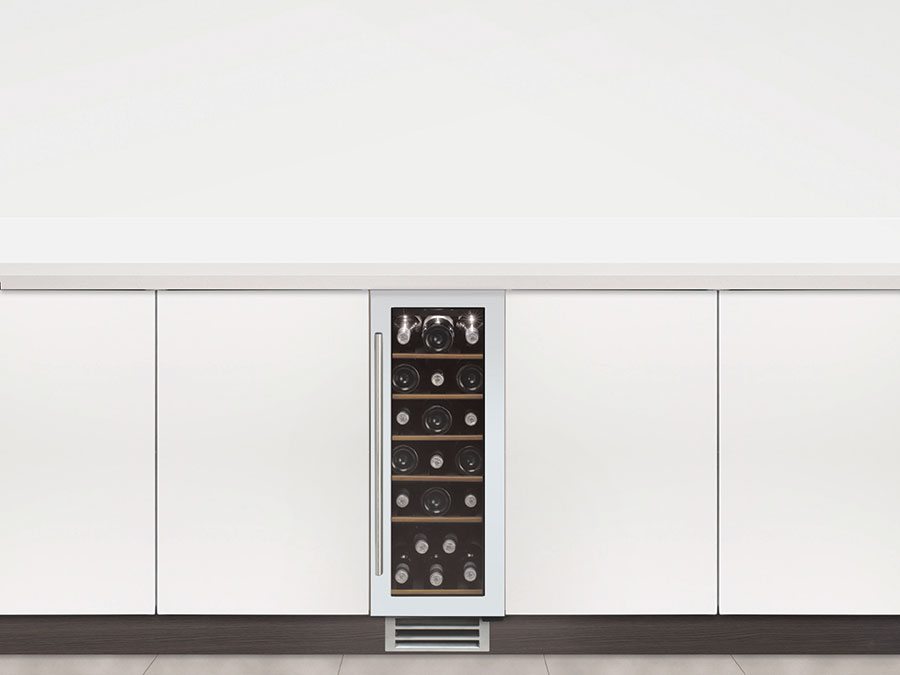
Designed to fit neatly under counters with a 19-bottle capacity, Caple’s Wi3118WH Sense Premium wine cabinet is priced from £526.
So, what wine cabinets are available?
There is now a huge variety of wine cabinets on the market, from sleek undercounter models that can hold between 10 to 40 bottles, through to in-column integrated units and larger freestanding or built-in models capable of storing up to 100 bottles.
For those with limited space, however, some manufacturers such as Smeg offer a compact 450mm wide model. Another option is a standard fridge-freezer with an integrated wine cabinet, which still offers all the same sophisticated features and temperature controls. Or a wine cabinet, which also has a section for beer or soft drinks such as Baumatic’s new Entertainment Centre.
Which one is right for you will depend on how much space you have, your budget and, of course, how much wine you wish to store!
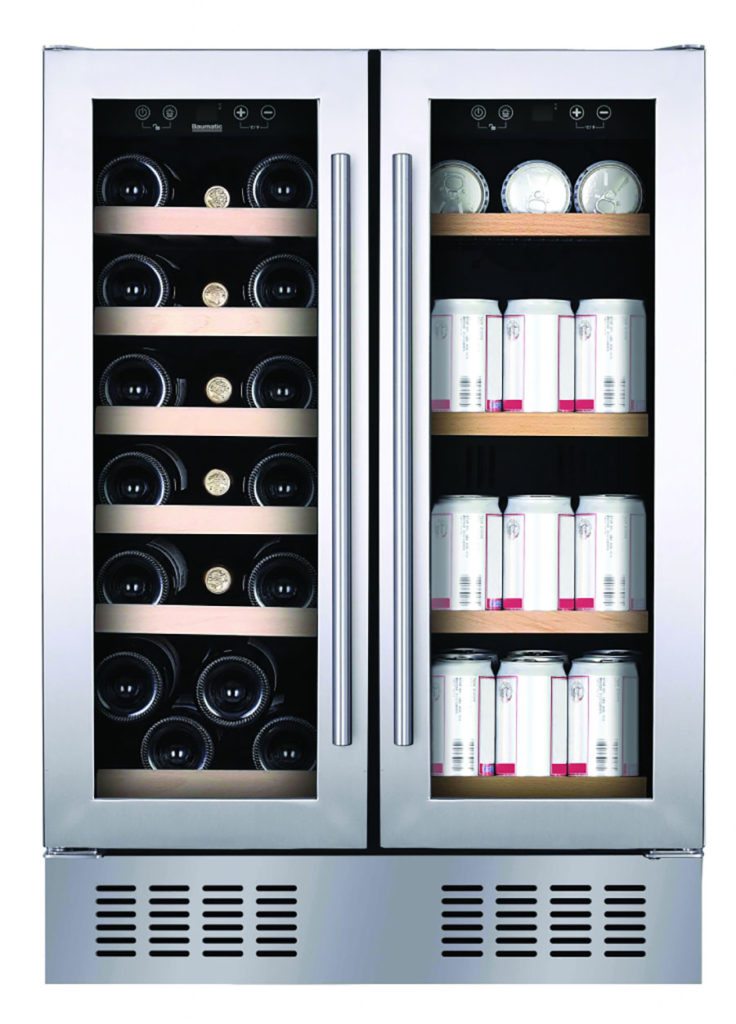
Baumatic’s Entertainment Centre features two separate compartments with the right hand one featuring a lower temperature for storing lager or soft drinks. Price on application.
Temperature matters…
Temperature control is the most important factor when storing wine as if it’s too hot, too cold or exposed to fluctuations this will affect the chemistry of the wine and therefore it’s taste. If the temperature is too high then it can become spoiled and take on a ‘stewed’ taste but if it’s environment is too cool, this can result in the development of deposits in your wine or there’s the chance it will start to freeze and expand, pushing the cork out or cracking the bottle.
For fine wines that you plan to store long-term, temperature control is particularly important as it will significantly affect the ageing process and therefore its aroma, flavour and complexity.
Wine cabinet manufacturer Hoover Candy Baumatic provides a general recommendation of 15.5-18.5 degrees Celsius for red wine, 10-15 degrees Celsius for white wine, 7.2-9.5 degrees Celsius for sparkling wine and champagne, 9.5-10.5 degrees for rose and 13 degrees Celsius for vintage wine.
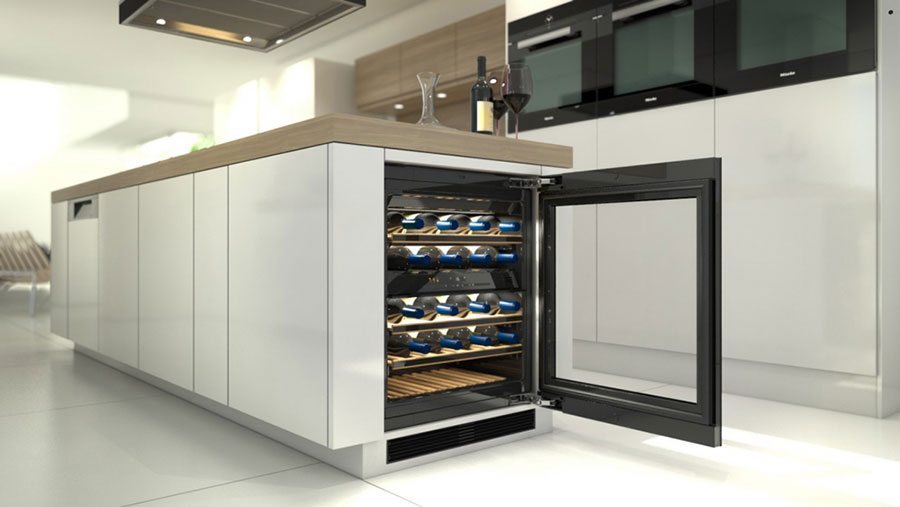
Each rack of the 6322 UG Under Counter Wine Conditioner by Miele can be personalised thanks to a magnetic strip that is coated with blackboard paint for use with chalk, making it easy to select your bottle of choice. Price £2779.
So does humidity and light…
Exposure to light, vibrations and humidity can also cause wine to spoil so many wine cabinets will ensure these are controlled as well – especially humidity. “If wines are not preserved at a humidity level of 65-70 per cent, the cork can shrink and let in oxygen – wine’s ‘arch nemesis’,” explains Kelly Penn, marketing manager at Hoover Candy Baumatic. “This means the flavours and aromas of the wine that were previously held in by the cork will start to depreciate. This is particularly pertinent to red wines but is also true of whites and Champagnes.”
White wines meanwhile are more sensitive to degradation from light (although this does affect reds too), which is why most bottles are dark and will have UV filters built into the bottle. However, invisible ultraviolet light can penetrate even dark glass, as well as glass doors, so many wine cabinets today offer protection against this with UV-protected doors.
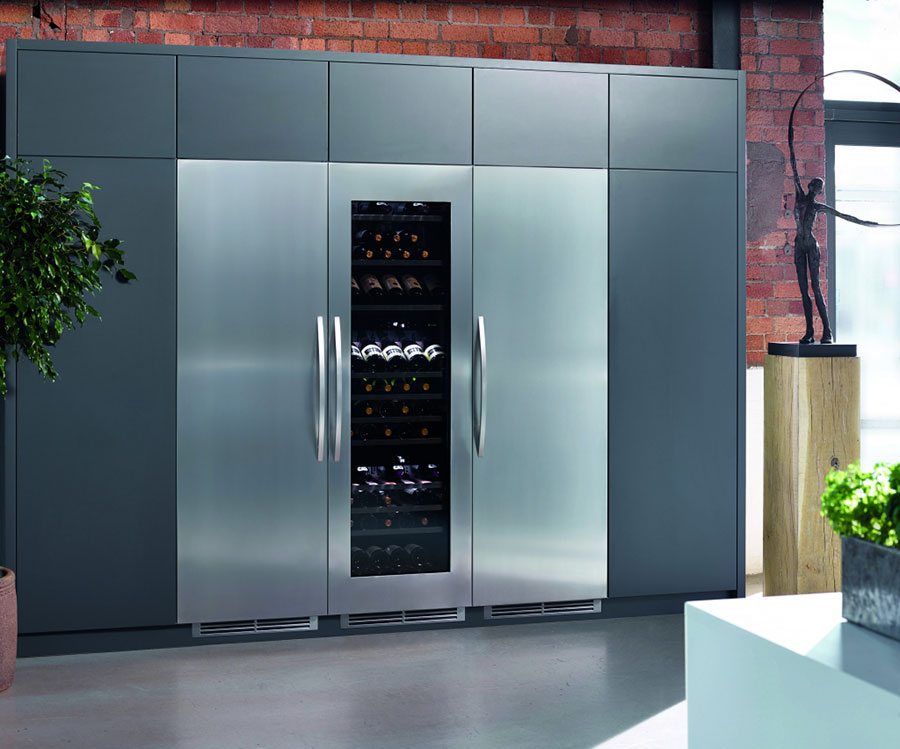
Boasting toughened UV-protected glass doors, the WC178 wine cabinet from Caple features three different temperature zones and can hold up to 89 Bordeaux bottles. Price £2583.
…and ventilation and vibration
Other factors that should be taken into consideration when looking for a wine cabinet are the ventilation and compressor, as low-vibration compressors will help prevent disturbance to the wine’s sediment balance, which affects the flavour.
“Indeed, a rough noisy compressor will disturb more than just the peace of your household as mechanical vibration can damage delicate wines such as pinot grigio,” explains Craig Davies, MD of Sub-Zero and Wolf UK. “Also look for a model that vents from the front as, if the unit overheats, it could break down or cause damage to an important collection of wine.”
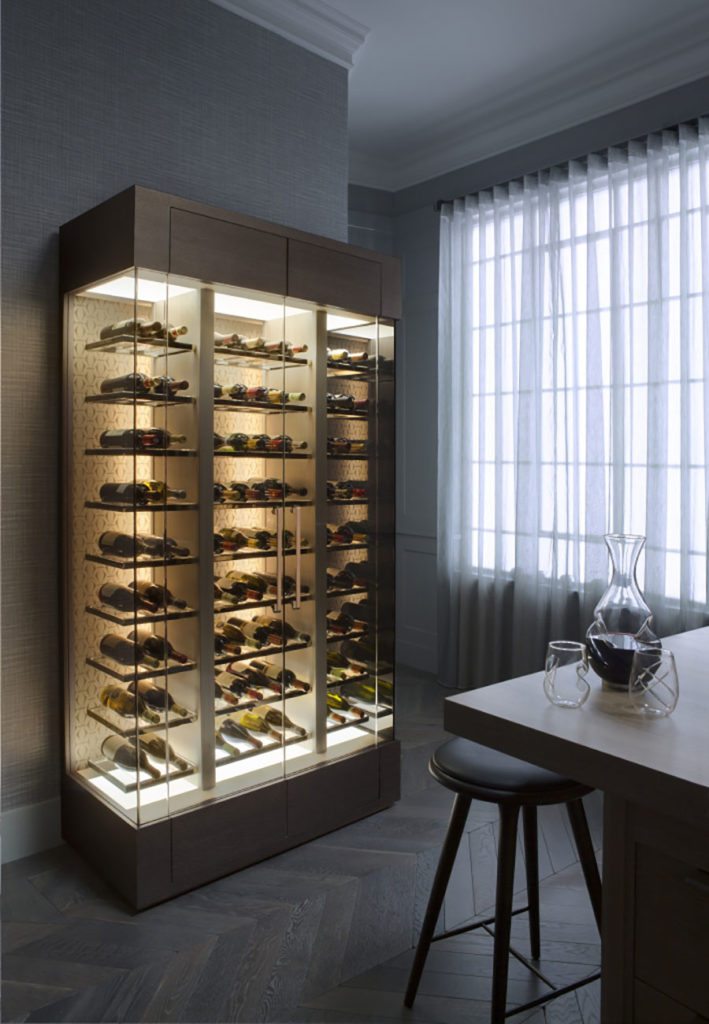
The Wine Wall from Smallbone of Devizes prevents vibration and eliminates UV rays whilst invisible grills circulate the airflow to ensure the perfect temperature and humidity levels. Prices start from £45,000.
What about shelving?
Shelving is another factor you might want to consider. It isn’t as crucial to the quality of wine as temperature and humidity although some experts believe that angled shelving is better because it can prevent the cork from drying out and spoiling your wine.
The other consideration is whether you want fixed or pull-out shelving. As Tim Hutchinson from Liebherr says, “in terms of accessibility, pull out shelving with telescopic rails and presentation shelves for that prized collection are usually the most desired choice. Additionally, how the wine is arranged can play a role in the buying decision, so we offer each of our wine cabinets with a practical presentation shelf and clip-on labelling systems to provide a quick and clear overview of the wine store.”
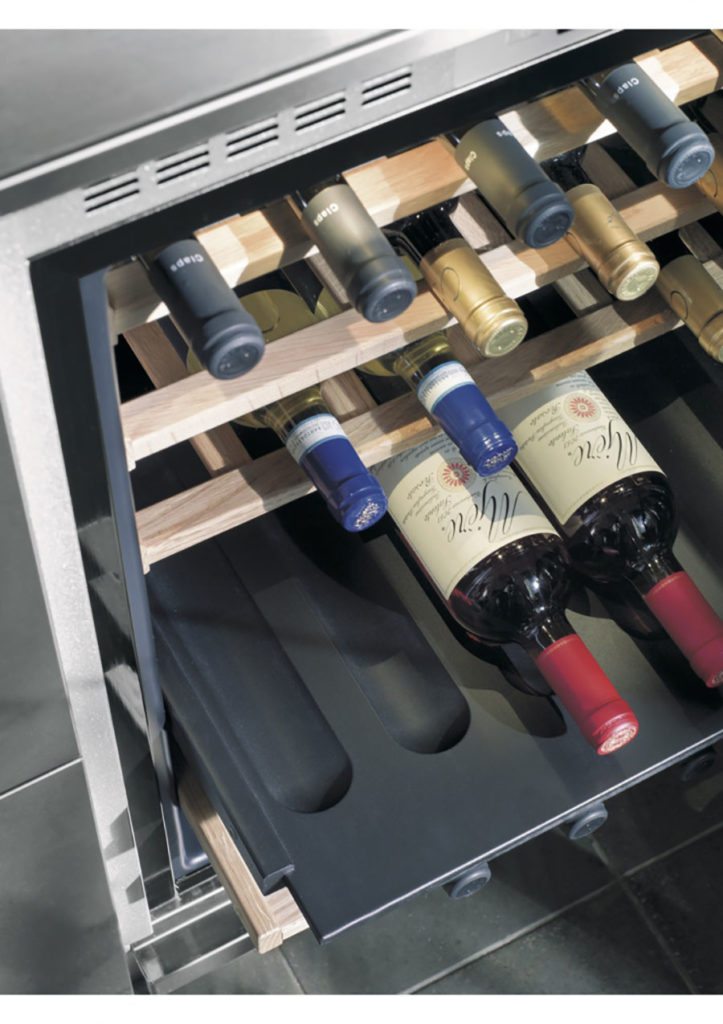
The KCZWX 20900 integrated wine cellar from KitchenAid features telescopic oak shelving for easy accessibility along with two temperature zones, automatic humidity control and LED lighting. Price £11,000.
What else to look for in a wine cabinet?
As discussed earlier, temperature control is very important for maintaining the quality of wine but different types of wine have different optimum temperatures, so try to look for a unit that offers dual settings. Some units will even offer three zones, allowing you to store red, white and Champagne simultaneously all at independent temperatures.
“Dual zone cabinets are available at all ends of the market and, for a lot of manufacturers, this has become a standard feature, whilst triple zone units are more common for top-end models,” says Daniele Brutto, co-founder of Hub Kitchens.
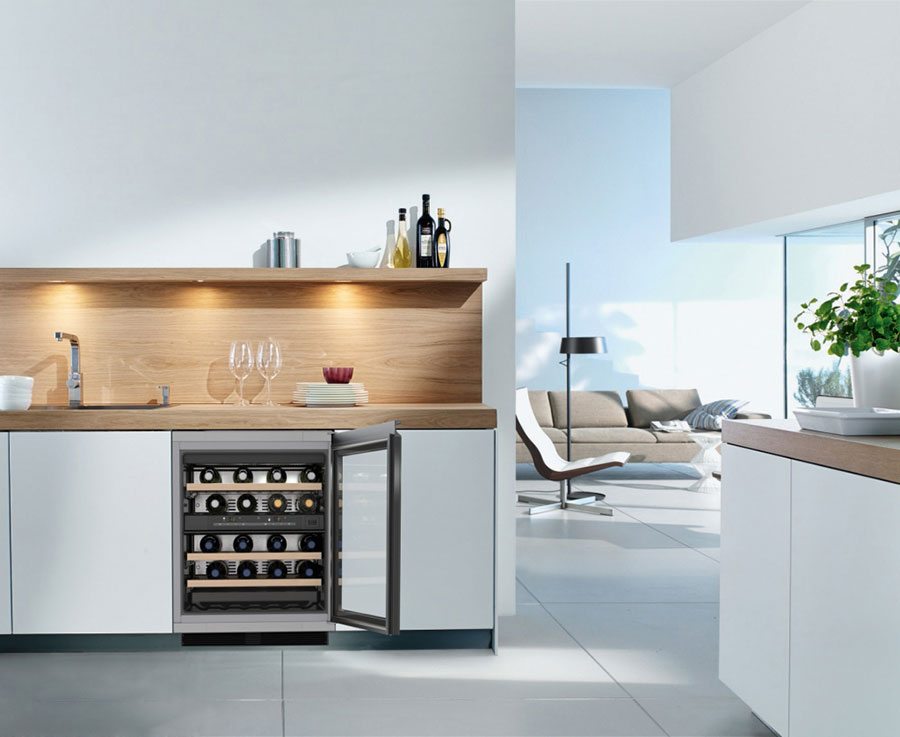
Offering two distinctive temperature controls as well as UV resistant glass doors, the Miele KWT 6321 Under Counter Wine Conditioner is priced at £2165.
What are other differences between top-end and entry-level models?
Top of the range wine cabinets are more likely to offer features such as LED lighting, soft-close mechanisms, LCD displays and, most importantly, insulated glass doors with UV protection to prevent sunlight from spoiling wine. In addition to these, manufacturers will offer their own special features. For example, Liebherr cabinets are designed with a filter that purifies the air (as wine kept for a long time may encourage unwelcome odours) whilst Smeg’s Dolce Stil Novo range was developed with some of the world’s leading sommeliers and includes complementary ‘sommelier drawers’ to sit neatly under the unit.
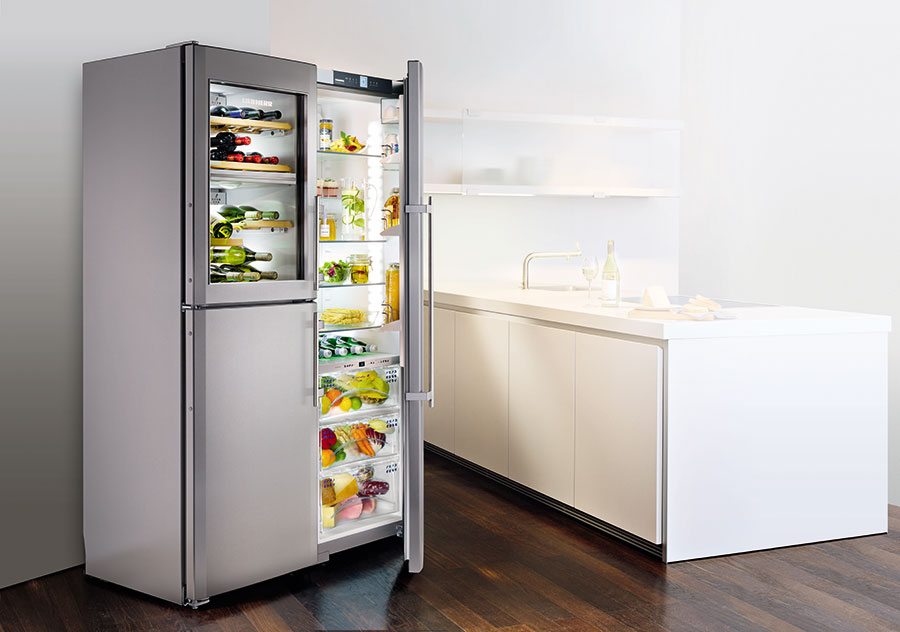
Incorporating a wine cabinet into a side-by-side fridge freezer, Liebherr’s SBSes 7165 features wooden shelves that can be positioned to tilt the bottles in a presentation style. Price £4349.
How long can you store wine for?
All wines vary and some fine wines will provide guidance on their label but a good rule of thumb according to Penn from Hoover Candy Baumatic is as follows: “When stored properly, white wines will keep well for up to two years, full bodied reds will age well for about 10 years and dessert wines for up to 20 years.”
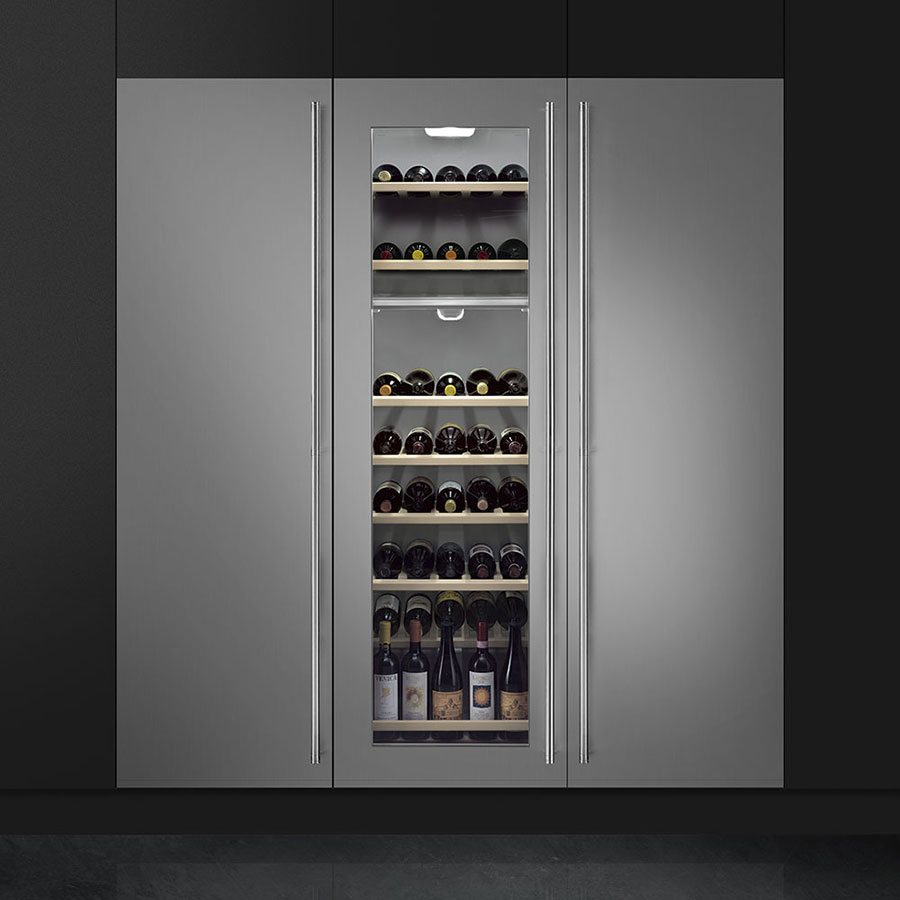
Crafted from premium stainless steel and available in either freestanding or integrated options, the Smeg WI360LX wine storage unit is priced at £4797.
What about once the wine is open?
After a bottle of wine has been opened, it will generally remain in a drinkable condition for two days for delicate whites, or three days for rich reds, as long as the bottle has been resealed. Sparkling wine and Champagne, meanwhile, will keep their bubbles and taste for one or two days if you use a stopper. Finally, once a bottle of wine is open it comes into contact with air, so it is best to store the bottle upright to minimise the surface area of the wine that’s coming into contact with the air.
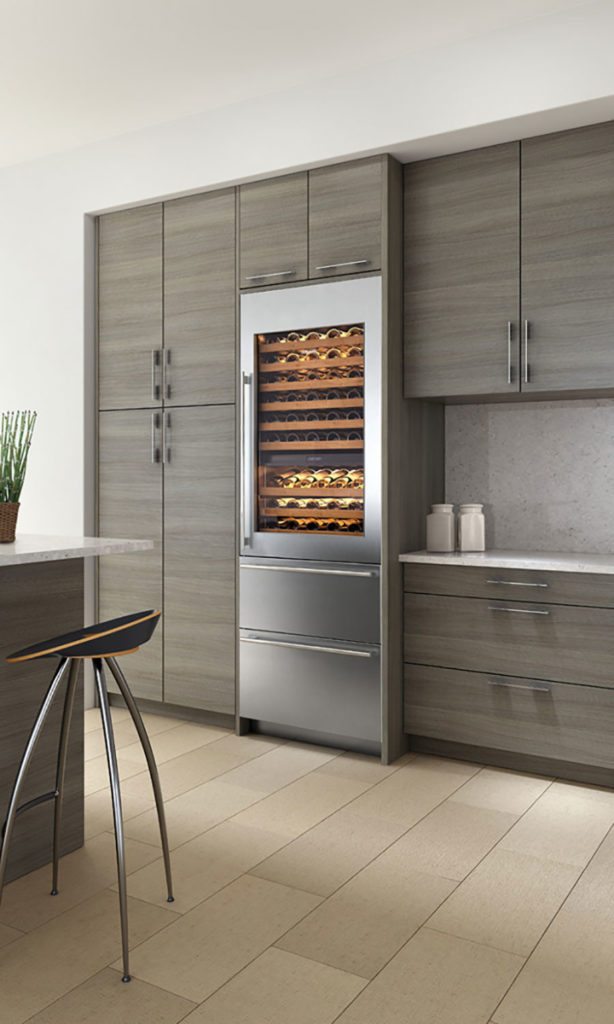
Sub-Zero’s impressive ICBIW-30R wine storage unit benefits from a dual glazed, bronze tinted UV protected glass door, dual temperature wine storage and an insulated compressor to avoid unsettling sediment. Price £9960.